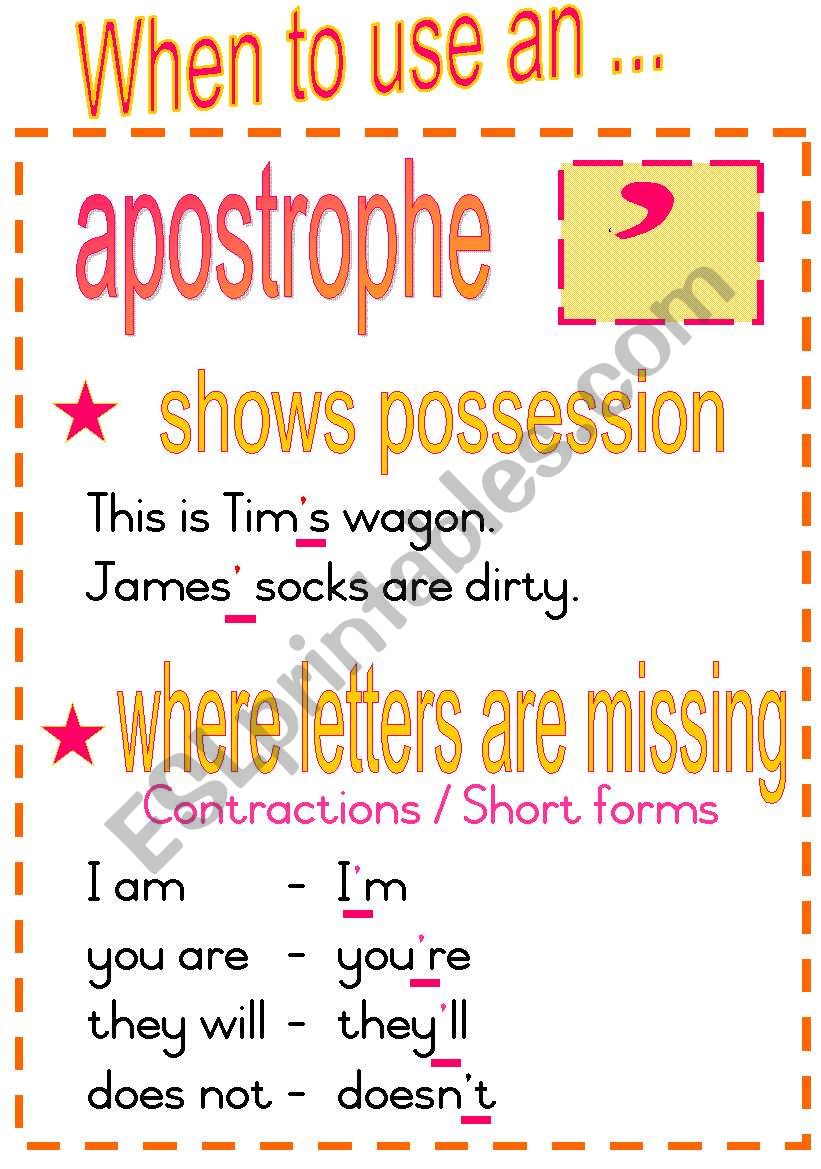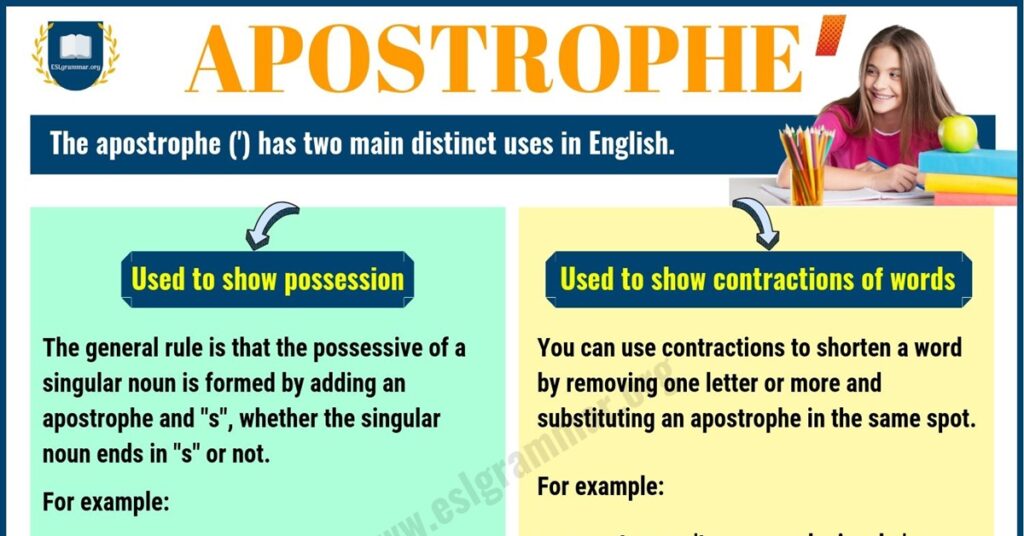Hey y'all, it's time we have a little chat about When To Use The Apostrophe. Now I know some of y'all might be thinking "why the heck does this even matter?" but lemme tell you, using the apostrophe correctly can make all the difference in how people perceive you. So let's get into it.
Rule #1: Possession
For Singular Nouns
First off, we gotta talk about showing possession. When a singular noun owns something, we add an apostrophe and an "s" at the end of the noun. For example, "The dog's leash is red." The leash belongs to the dog.

For Plural Nouns
Now, when it comes to plural nouns, we add just an apostrophe (no "s") at the end if the noun already ends in "s". For example, "The dogs' leashes are red." The leashes belong to multiple dogs.
If the plural noun does not end in "s", we add an apostrophe and an "s" at the end. For example, "The children's toy is lost." The toy belongs to the children.
Rule #2: Contractions
When Two Words Combine
Apostrophes are also used to show when two words combine. This is called a contraction. For example, "I am" becomes "I'm" and "cannot" becomes "can't".

When It's Just A Letter
Now, when you're using a contraction with a word that ends in "s", things can get a little tricky. If you're just adding an apostrophe to a word like "James' feet", then you're doing it wrong. It should actually be "James's feet".
Rule #3: Not For Plurals
Apostrophes Don't Make Plurals
It's important to note that apostrophes are not used to make things plural. So saying "I have two apple's" is incorrect. It should just be "I have two apples".

Rule #4: The Exceptions
It's vs Its
One exception to the rules of apostrophes is the difference between "it's" and "its". "It's" is a contraction for "it is" while "its" shows possession. So when you're talking about something belonging to "it", you don't use an apostrophe. For example, "The car lost its wheel".
Names Ending In "s"
Another exception is when you're dealing with a name that ends in "s". Some people choose to add just an apostrophe instead of an apostrophe and an "s". Both are technically correct, but it's important to be consistent. So if you decide to go with just an apostrophe, make sure you do it for all names that end in "s". For example, "Charles' car" or "Charles's car".

Putting It All Together
Now that we've gone over the basics, let's talk about some tips and tricks to make sure you're using apostrophes correctly.
Contractions
- Remember that contractions are formed by combining two words and replacing a letter or letters with an apostrophe.
- Don't confuse it's (it is) with its (belonging to it).
- When in doubt, spell it out. If you're not sure whether to use a contraction or not, just spell out the words.
Possession
- Remember that if a singular noun owns something, add an apostrophe and an "s". For example, "The lion's roar".
- For plural nouns that already end in "s", just add an apostrophe at the end. For example, "The girls' locker room".
- If a plural noun doesn't end in "s", add an apostrophe and an "s". For example, "The people's choice".
Other Things To Keep In Mind
- Apostrophes are never used to make something plural.
- If a name ends in "s", you can add an apostrophe and an "s" or just an apostrophe. Just be consistent.
So there you have it, folks. You're now an apostrophe pro! Remember, using proper grammar and punctuation can make a world of difference. It may seem small, but it can impact how people perceive you and your intelligence. So take the time to brush up on your apostrophe skills, and your writing will thank you for it.

Read more articles about When To Use The Apostrophe